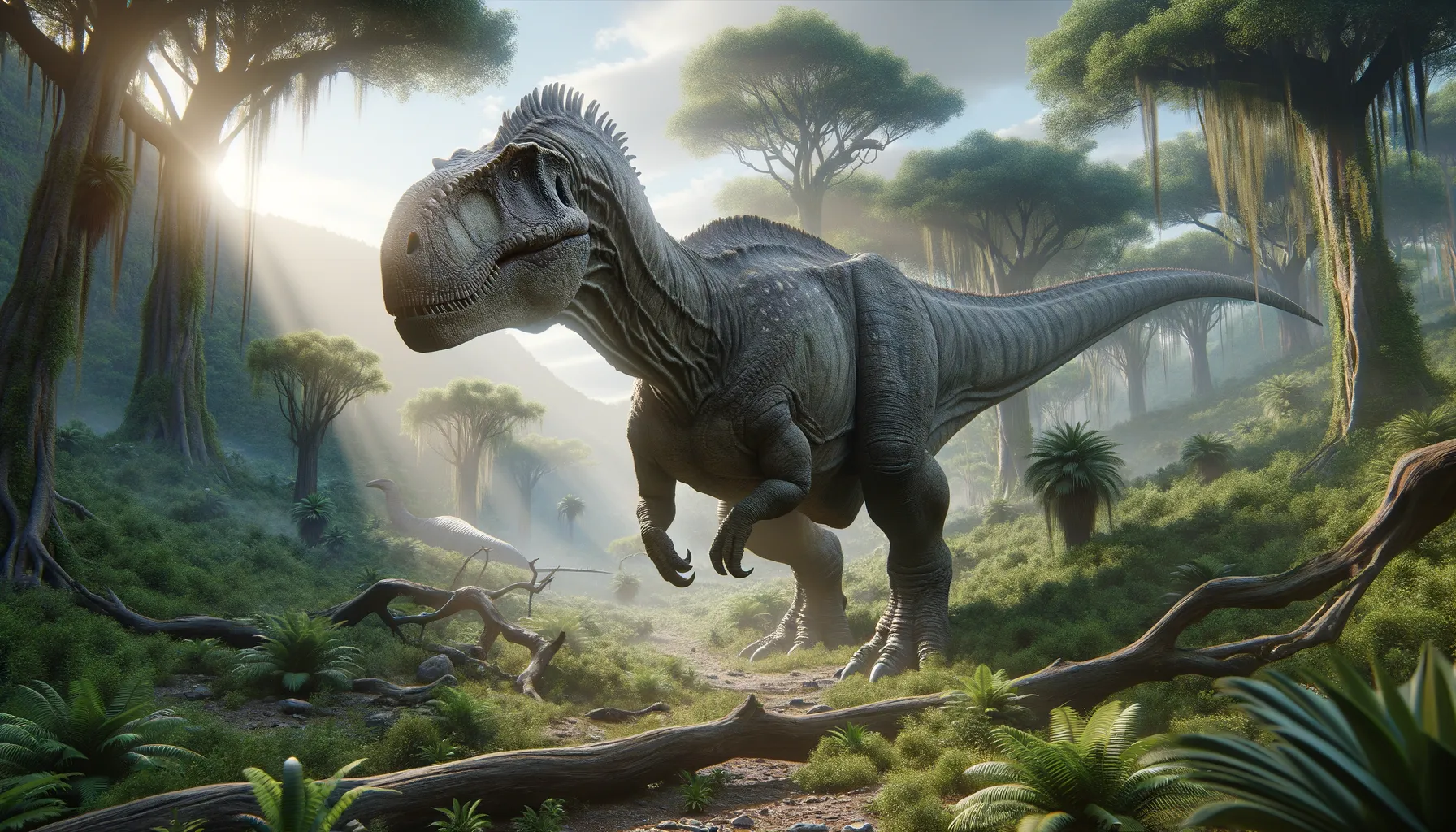
Baalsaurus
Quiet giant of the prehistoric forests.
Period
Cretaceous
Length
Estimated 24 feet long.
Height
Around 10 feet tall.
Weight
Approximately 3 tons.
Baalsaurus is a recently discovered dinosaur from the Cretaceous period, primarily known from fossil evidence found in Argentina. This massive herbivore roamed the forested regions with its heavy build and stout limbs. Being a part of the sauropod family, it played a crucial role in the ecosystem by aiding in seed dispersal and shaping the vegetation structure of its time. The fossil findings have opened new insights into the diversity of herbivorous dinosaurs in South America.
Diet
Baalsaurus primarily fed on a wide variety of vegetation, including ferns, cycads, and conifer leaves. Its long neck allowed it to reach higher into the trees to access food sources unavailable to other, shorter herbivores.
Hunting
As a herbivore, Baalsaurus did not hunt but was likely a target for carnivorous predators of its time. It probably used its size and herding behavior as a defense mechanism.
Environmental challenges
Baalsaurus faced challenges such as changing climates and dwindling food resources due to seasonal variations. Occasional droughts would have forced it to migrate in search of better feeding grounds. It also faced threats from natural predators that would occasionally target younger or weaker members of the herd.
Speed
Relatively slow due to its size.
Lifespan
Lived for several decades.
First discovery
First discovered in Argentina, 2023.
Fun Facts
- Baalsaurus was a herbivorous dinosaur that lived during the Early Cretaceous period.
- Its fossils were discovered in the Neuquén Province of Argentina, providing insights into ancient life in South America.
- Baalsaurus is part of a group of dinosaurs known as rebbachisaurids, which were characterized by their long necks and herbivorous diets.
- The dinosaur's name, Baalsaurus, is a nod to the Baal stone where its fossils were found, merging paleontology and local geology.
- Although not the largest sauropod, Baalsaurus still had an impressive size with long neck and tail, typical of its family.
- Baalsaurus likely lived in a lush environment, surrounded by rivers and abundant plant life to feed on.
- Significant fossil finds like Baalsaurus help scientists understand how different dinosaur species adapted to their environment.
Growth and Development
Baalsaurus experienced rapid growth during its early years, requiring vast amounts of vegetation to fuel its significant increase in size. It had a lengthy maturation period, reaching full size only after several years. Its development involved growing more robust and capable of utilizing its environment efficiently for feeding and survival.
Habitat
Baalsaurus lived in lush, semi-tropical environments with abundant plant life. These habitats included dense forests and open areas where it could roam and graze freely. Seasonal rivers and floodplains provided it with necessary moisture and allowed rich vegetation to flourish.
Interaction with other species
Baalsaurus likely lived in herds, protecting itself against predators and collaborating in feeding activities. It may have coexisted with other herbivores, sharing resources and using its large size to serve as a deterrent to predators. Interactions with predator species were inevitable but often involved defensive maneuvers to protect the herd's vulnerable members.
Natural lifespan
Baalsaurus had a natural lifespan potentially reaching up to 70 years.
Reproduction
The Baalsaurus was likely oviparous, laying eggs in secured nests. It possibly exhibited some level of parental care, such as guarding the nesting area from predators and environmental threats. Hatchlings would be vulnerable initially, depending on the herd for protection and learning basic survival skills.
Social behaviour
Baalsaurus exhibited strong social behavior typical of herd animals. Social bonding would be crucial for protection and collaborative feeding. Mutual grooming, vocal communications, and coordinated movements were likely parts of their interaction within the group.
Fossil locations
Fossils of Baalsaurus have been uncovered in Argentina, specifically in the Neuquén Basin. This region has offered rich paleontological insights into the diverse array of dinosaur species that inhabited South America during the Cretaceous period. The fossil findings contribute to a larger picture of the prehistoric ecosystems of that era.
